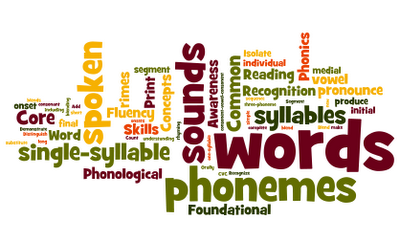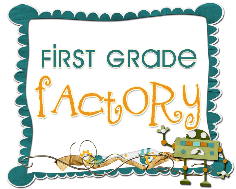Monday, June 27, 2011
Thursday, June 23, 2011
CCSS Reading Foundational Skills {Onset & Rime Awareness}
In addition, I have included links to interactive onset and rime games on readwritethink.org and free classroom materials that are immediately useful in implementing independent student center activities at fcrr.org. Click on the pictures to access these links.
Tuesday, June 21, 2011
CCSS Reading Foundational Skills {Syllable Counting & ID}
To teach syllable counting and identification (Common Core State Standard RF.K.2b), start with some fun whole group songs using student names. Both the “Name Song” and “Super Duper 1, 2, 3” will model how to segment syllables. The “Name Song” is sung to the tune of BINGO. Choose a child (I like to pick sticks for fairness), and then add their name into the song. After singing “Super Duper 1, 2, 3” whole group and counting syllables together, you can have each student try counting the syllables in their name independently.
Another activity to practice segmenting syllables is with a “Syllable Bar Graph” sort. Using a pocket chart, picture cards {included}, and number cards {included} (1-4), model how to segment and count syllables. After counting the syllables, place the card on top of the corresponding number. This activity can be done whole group, and eventually placed into a center activity.
 Finally, practice segmenting syllables using Skittles!! Each student will need a “Skittle Scoot” board {included} and Skittles. The teacher will say a word (or student name) out loud. Students will segment the word and scoot the corresponding number of Skittles in the boxes.
Finally, practice segmenting syllables using Skittles!! Each student will need a “Skittle Scoot” board {included} and Skittles. The teacher will say a word (or student name) out loud. Students will segment the word and scoot the corresponding number of Skittles in the boxes.
 To practice blending syllables, the teacher can choose a picture card. The teacher says the word, pausing between syllables. Students will say how many syllables they heard and then say the word. For example, the teacher chooses the card “spider”. Teacher says, “spi-der”. The students respond, “2, spider.” After plenty of whole group modeling and practice, this activity can also be placed into a center activity.
To practice blending syllables, the teacher can choose a picture card. The teacher says the word, pausing between syllables. Students will say how many syllables they heard and then say the word. For example, the teacher chooses the card “spider”. Teacher says, “spi-der”. The students respond, “2, spider.” After plenty of whole group modeling and practice, this activity can also be placed into a center activity.
 For more activities, The Florida Center for Reading Research (FCRR) provides free classroom materials that are immediately useful in implementing independent student center activities. For specific activities that related to phonological awareness, check out book one. Clipart by Lettering Delights.
For more activities, The Florida Center for Reading Research (FCRR) provides free classroom materials that are immediately useful in implementing independent student center activities. For specific activities that related to phonological awareness, check out book one. Clipart by Lettering Delights.
Another activity to practice segmenting syllables is with a “Syllable Bar Graph” sort. Using a pocket chart, picture cards {included}, and number cards {included} (1-4), model how to segment and count syllables. After counting the syllables, place the card on top of the corresponding number. This activity can be done whole group, and eventually placed into a center activity.
 Finally, practice segmenting syllables using Skittles!! Each student will need a “Skittle Scoot” board {included} and Skittles. The teacher will say a word (or student name) out loud. Students will segment the word and scoot the corresponding number of Skittles in the boxes.
Finally, practice segmenting syllables using Skittles!! Each student will need a “Skittle Scoot” board {included} and Skittles. The teacher will say a word (or student name) out loud. Students will segment the word and scoot the corresponding number of Skittles in the boxes.  To practice blending syllables, the teacher can choose a picture card. The teacher says the word, pausing between syllables. Students will say how many syllables they heard and then say the word. For example, the teacher chooses the card “spider”. Teacher says, “spi-der”. The students respond, “2, spider.” After plenty of whole group modeling and practice, this activity can also be placed into a center activity.
To practice blending syllables, the teacher can choose a picture card. The teacher says the word, pausing between syllables. Students will say how many syllables they heard and then say the word. For example, the teacher chooses the card “spider”. Teacher says, “spi-der”. The students respond, “2, spider.” After plenty of whole group modeling and practice, this activity can also be placed into a center activity.  For more activities, The Florida Center for Reading Research (FCRR) provides free classroom materials that are immediately useful in implementing independent student center activities. For specific activities that related to phonological awareness, check out book one. Clipart by Lettering Delights.
For more activities, The Florida Center for Reading Research (FCRR) provides free classroom materials that are immediately useful in implementing independent student center activities. For specific activities that related to phonological awareness, check out book one. Clipart by Lettering Delights.
Friday, June 17, 2011
CCSS Reading Foundational Skills {Repetition & Alliteration}
Common Core Reading standards place emphasis on an integrated model of literacy. As I mentioned in the prior post, the standards also establish a “staircase” of increasing complexity.
 Within this model, it is vitally important that teachers are teaching foundational skills using actual text that is the appropriate complexity. To ensure that all teachers are using a complex range of on-level texts, CCSS provides text examplars for “grade bands”. The grade bands are K-1, 2-3, and 4-5. Text examplars are example texts that students should be exposed to and engage with. CCSS offers text exemplars for Reading Literature and Reading Informational Texts. While these lists are not all encompassing, they are a great starting point for teachers to teach from and then identify similarly rigorous texts.
Within this model, it is vitally important that teachers are teaching foundational skills using actual text that is the appropriate complexity. To ensure that all teachers are using a complex range of on-level texts, CCSS provides text examplars for “grade bands”. The grade bands are K-1, 2-3, and 4-5. Text examplars are example texts that students should be exposed to and engage with. CCSS offers text exemplars for Reading Literature and Reading Informational Texts. While these lists are not all encompassing, they are a great starting point for teachers to teach from and then identify similarly rigorous texts.
Today’s downloads include repetition and alliteration activities and CCSS K-1 Text Exemplars for Poetry. {For nonprofit educational use only!!} These downloads will allow you to promote the phonological skills of repetition and alliteration awareness, and then extend into using complex text.
- RL.K.4 Ask and answer questions about unknown words in a text.
- RL.K.5 Recognize common types of texts (e.g., storybooks, poems).
- RL.1.1 Ask and answer questions about key details in a text.
- RL.1.4 Identify words and phrases in stories or poems that suggest feelings or appeal to the senses.
- RL.1.10 With prompting and support, read prose and poetry of appropriate complexity for grade 1.
Stay tuned for more activities to support the CCSS Reading Foundational Skills. Clipart by Lettering Delights.
Wednesday, June 15, 2011
CCSS Reading Foundational Skills {Rhyme Recognition}

For the first week of my break, I have been privileged to attend our District’s Common Core State Standards Summer Institute. While it has been hard to wake up even earlier than a normal school day, I am glad that I will have a head start for the new school year. It will also be my privilege to take what I have learned and instruct my staff. Since I am so excited about this new phase in education, I figured I would share some of my new learning. So here it goes…Summer To Do List: Understanding CCSS Reading Foundational Skills.
Stay tuned for more activities to support the CCSS Reading Foundational Skills.
Friday, June 10, 2011
Classroom Clutter
For the past three weeks, I have been trying to pace myself and clean out my classroom clutter. The end of the year always approaches so quickly, and there is never enough time to regroup. Plus, we are not allowed back on campus until mid-August. My mission: Organization!!
Anna Brantley, of Crazy for First Grade, shared a wonderful and practical method for storing materials. So after downloading her free organization labels, I headed over to the Container Store’s website. I fell in love with their clear containers used for storing shoes. These containers are the perfect width and length for use in my filing and wardrobe cabinets. Plus, you can also see through the lid.
I am so happy that I paced myself and organized all of my materials. Nothing makes this type A girl more happy than things in their proper place. I found that I had materials that I forgot about or couldn’t find. And, after six years of being in the same classroom, I was acquiring sTuFf like a hoarder on A&E. I can finally see what I have and move items about more freely. Now that I’m on break, I can sit back, relax, and think about my beautiful drawers and cabinets. Thanks Anna and the Container Store! Clipart by Lettering Delights.
Subscribe to:
Posts (Atom)








































































